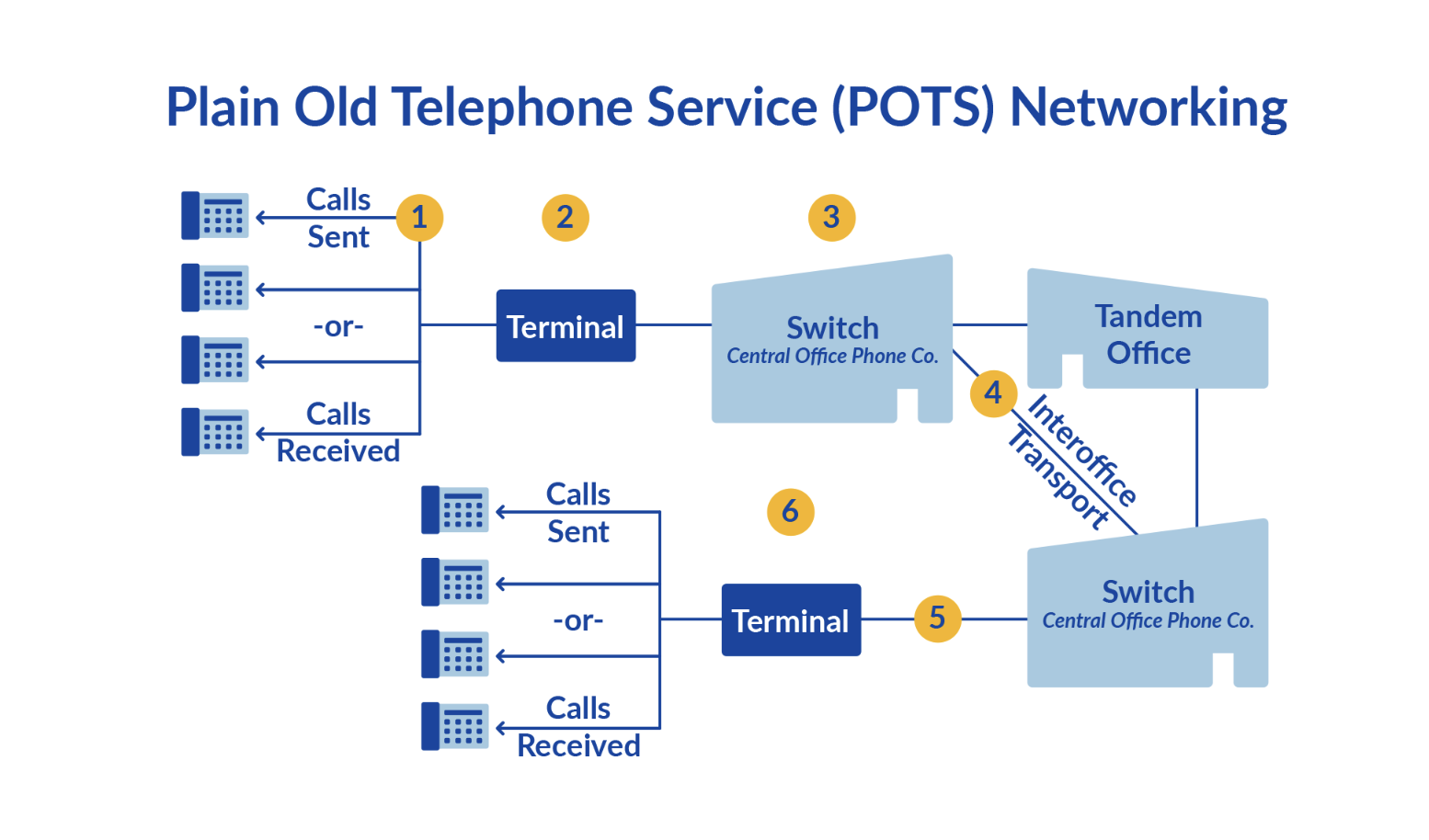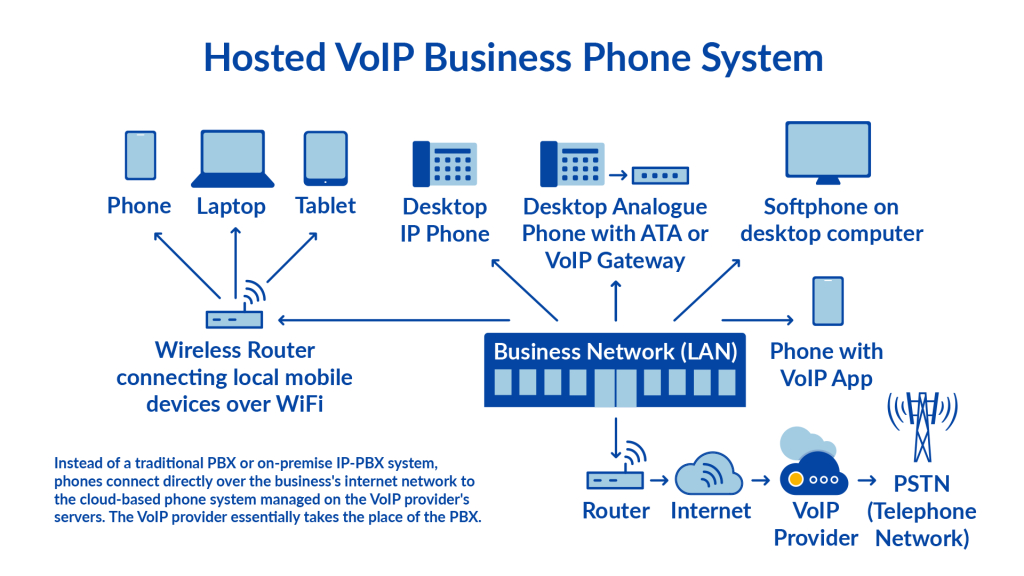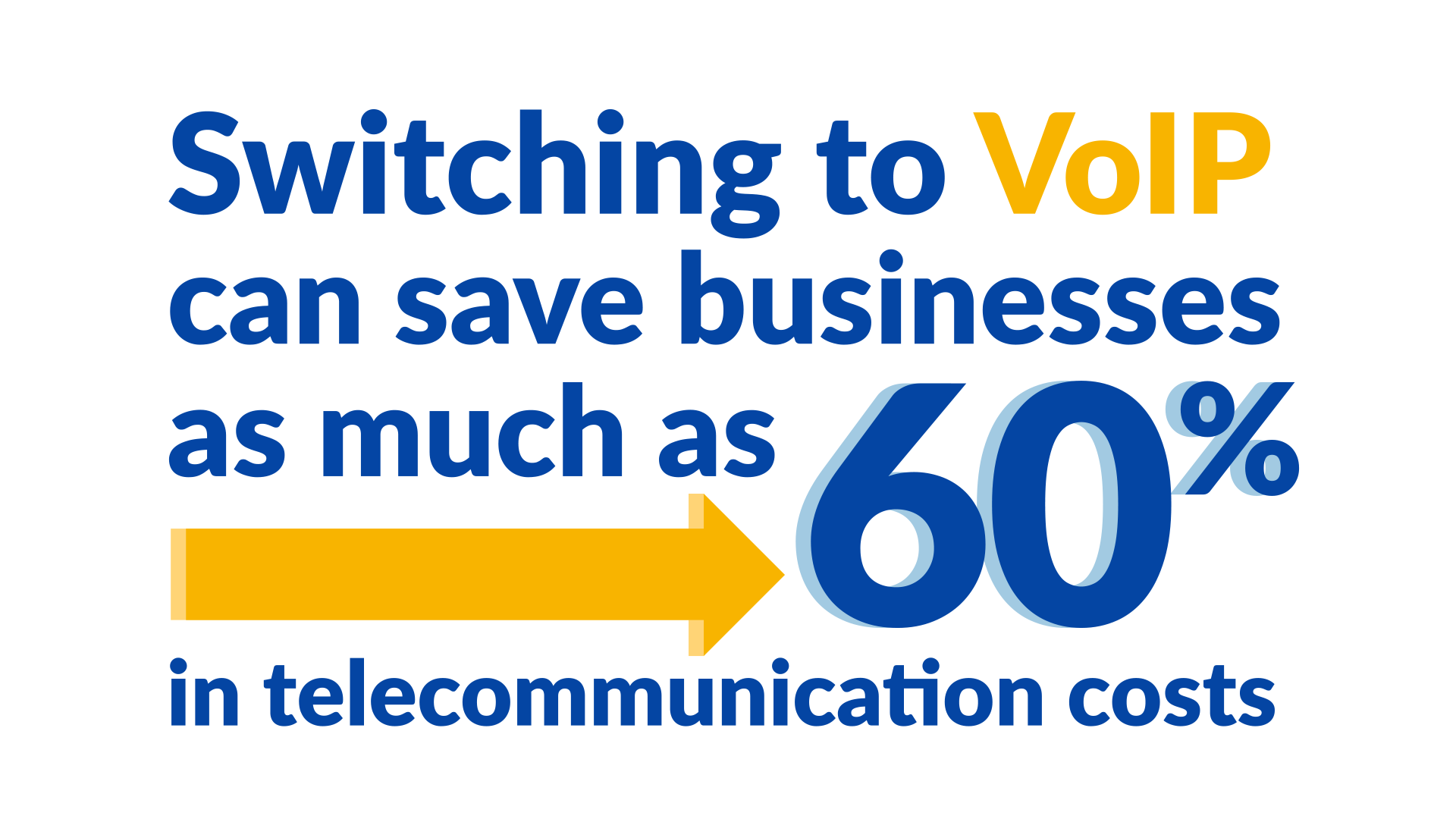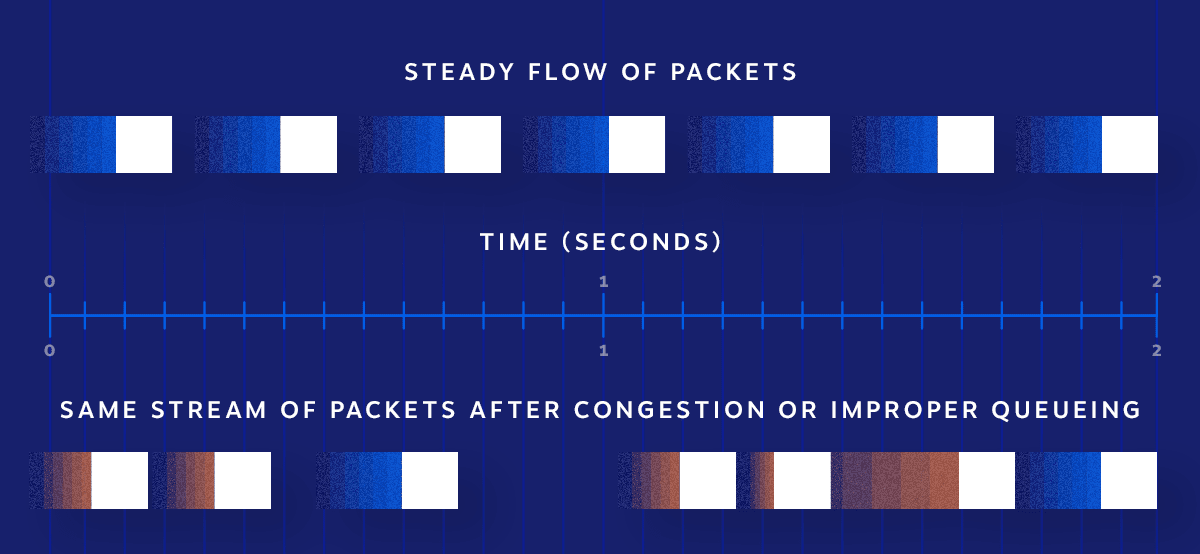Keep in mind these clunky outdated PBX cellphone programs that companies used to depend on? Those that regarded like they have been constructed within the late Nineteen Sixties and sounded prefer it? Connecting these relics to the analog cellphone community was no straightforward activity.
The answer again within the day was an interface referred to as PRI, which is brief for Main Price Interface. PRI allowed firms to transmit as much as 23 calls concurrently over a single T1 line.
This was a giant step up from earlier choices that required separate strains for every name.
For a time period, PRI was the definitive manner for companies to arrange their cellphone programs — usually referred to as trunks, for years.
Then, Voice over Web Protocol (VoIP) modified every little thing.
Whereas PRI is now thought-about legacy know-how, it nonetheless has some area of interest use circumstances for firms operating classic tools. On this publish, we’ll dive into the historical past of PRI, the way it works, and why VoIP made it out of date for many fashionable enterprise cellphone programs.
We’ll additionally cowl VoIP and different alternate options later within the article.
What Is PRI?
PRI stands for Main Price Interface. It’s a kind of digital phone line that connects enterprise phone programs to the general public switched phone community (PSTN).
PRI carries a number of voice and knowledge transmissions between two bodily areas. It makes use of the Built-in Companies Digital Community (ISDN) protocol to supply digital connectivity slightly than analog landlines.
Enterprise cellphone programs that have to assist excessive volumes of concurrent calls and dependable voice/knowledge companies, like name facilities, places of work, motels, and hospitals primarily use PRI.
With a PRI, companies profit from elevated name capability, quick knowledge transmission, built-in voice or knowledge, and decrease price in comparison with a number of analog strains.
Options of a PRI Line
To raised perceive how a PRI truly works, let’s first have a look at a few of its key options:
- A PRI line is made up of two pairs of copper wires connecting the service supplier (community) to the client (enterprise end-user).
- PRI is technically one line, however it may possibly concurrently transmit 23 separate communications (voice, knowledge, or video.) This implies as much as 23 individuals in your organization could be on the cellphone (or sending an IM or having a video chat) concurrently.
- Every of a PRI’s channels has a 64 kbps capability for knowledge transmissions.
- PRI strains can work with an analog or combined EPABX setup in addition to an IP PBX system.
- A PRI can be part of two personal department trade (PBX) programs collectively, rising the variety of obtainable communication channels.
How PRI Works
The PRI circuit — the precise cable that bodily connects your telecom system — is on the market in two flavors: T1 and E1.
The principle distinction between the 2 PRI circuits has rather a lot to do with geographical location, although there are some technological variations to pay attention to:
| E1 | T1 |
|---|---|
| Utilized in Europe and Australia | Utilized in North America and Asia |
| Gives 64 Kpbs for knowledge transmission | Gives 64 Kpbs for knowledge transmission |
| Transmit and obtain a charge of two.048 Mbps | Transmit and obtain charge of 1.544 Mbps |
| Bodily comprises two pairs of copper wires | Bodily comprises two pairs of copper wires |
| 32 whole channels | 24 whole channels |
| 30 channels used for voice, knowledge, video | 23 channels used for voice, knowledge, video |
| 2 channels are used for signaling | 1 channel used for signaling |
PRI permits for direct inward dialing (DID), which means somebody from exterior the corporate can dial an worker’s direct quantity and attain them straight. An organization can have many particular person direct cellphone numbers for workers, whereas solely needing a restricted variety of bodily cellphone circuits.
For instance, a single PRI circuit with 23 obtainable channels may probably assist as much as 50 workers with direct numbers. This works as a result of it’s unlikely all workers shall be on calls on the similar time.
As an organization grows, extra PRI circuits could be added to develop capability.
So if the preliminary PRI circuit is totally utilized with 23 simultaneous calls, a second PRI could be added to double the capability to 46 calls. This modular expandability makes PRI scalable and cost-effective in comparison with legacy analog cellphone programs.
PRI offers an environment friendly and versatile digital phone resolution for companies.
The shared channels allow many workers to direct numbers whereas minimizing the bodily circuits required. Capability could be simply expanded as wanted by including supplemental PRI circuits.
Advantages of PRI
PRI presents substantial advantages. Let’s have a look at some the explanation why many companies nonetheless use this tech.
- Value Financial savings – Many workers share a small variety of bodily circuits, decreasing prices in comparison with analog cellphone strains. Fewer bodily strains imply decrease month-to-month prices.
- Scalability – Including PRI circuits is a simple approach to develop capability as a enterprise grows.
- Name High quality – PRI offers high-quality digital voice high quality in comparison with analog cellphone strains. The all-digital interface eliminates sign degradation.
- Flexibility – Helps not simply voice calls, but additionally knowledge and video. Channels could be dynamically allotted to totally different media sorts as wanted.
- Productiveness – Options like name forwarding, conferencing, caller ID, and extra assist workers be extra productive. PRI helps superior capabilities not doable on fundamental analog strains.
- Reliability – Gives wonderful reliability and uptime. Redundant circuits could be added to remove single factors of failure. PRI is much less liable to points like line noise.
- Administration – Gives enhanced administration capabilities, permitting full management over the phone system from one centralized level. Provides, strikes, and modifications are software-defined.
- Future-Proofing – PRI units a enterprise up with a contemporary voice infrastructure that may evolve as wants change. It’s a digital resolution slightly than outdated analog know-how.
Drawbacks of PRI Techniques
Up till the Nineteen Nineties, most enterprise cellphone programs relied on legacy PBX tools. Whereas practical, these growing older PBX programs have been clunky, restricted, and troublesome to hook up with the analog phone community.
That is the place the PRI got here in.
For years, PRI was the go-to resolution for firms needing to attach their antiquated PBX programs to the PSTN.
However, know-how marches on. VoIP emerged within the 2000s as a disruptive drive in telecommunications, and PRI started to indicate its age. Why?
- Value – PRI strains are typically costlier than another telephony choices like VoIP. The {hardware} and set up prices could be excessive.
- Capability limits – Every PRI line helps 23 B channels for voice/knowledge and 1 D channel for signaling. So a single PRI limits you to 23 concurrent calls. To scale up, you want a number of PRIs.
- Complexity – PRIs contain extra complicated {hardware} and configurations than analog strains. This could make strikes, provides, and modifications harder. It additionally requires educated technicians to put in and preserve.
- Reliability – Since PRIs depend on the service supplier’s community, any points with their community can impression reliability. Issues like line cuts or change outages could cause service disruptions.
- Restricted flexibility – PRIs assist solely the signaling requirements and options supplied by the telco supplier. So it is probably not doable to allow newer IP-based options.
- Legacy know-how – PRIs are tied to older time-division multiplexing (TDM) networks. As telcos transfer towards IP-based networks, assist and evolution for PRIs will diminish over time.
- Restricted availability – In some geographic areas, telco suppliers might not supply PRI companies. Availability is diminishing as suppliers shift focus away from TDM.
Alternate options To PRI
There’s no denying major charge interface know-how modified the best way companies may talk with prospects 30+ years in the past. However since that point, advances in telecommunications know-how have shined a reasonably vibrant mild on a few of PRI’s shortcomings.
Companies are in search of alternate options to PRI. There are a number of choices on the market, however not each choice is an effective match for each enterprise.
Right here’s a have a look at some key PRI alternate options to contemplate.
1. Analog POTS strains
POTS is Plain Previous Phone Service. It’s the old-school cellphone line that related each home and enterprise.
Your grandparents had one. Your dad and mom had one. You would possibly even have POTS at your own home. Within the residential area, POTS is sometimes called a landline or a PSTN.
POTS offers service by a single analog circuit connecting the service supplier and the consumer.
A POTS helps one communication at a time. This implies a single cellphone name renders the road unavailable for anything, like a fax or modem web entry.
At one level in historical past, analog POTS strains have been the best way individuals communicated by cellphone. And it may nonetheless work as an answer for a small enterprise in the present day if cellphone visitors is minimal.
POTS is usually dependable, however the know-how has reached its apex. As different communications programs develop, POTS is slowly disappearing from the scene.

2. SIP trunking
Session Initiation Protocol (SIP) is the tactic of transmitting voice communication over an information community. A Voice over IP name is an instance of a SIP session.
SIP trunking is kind of like a POTS. However, with SIP trunking no cellphone strains run in all places. As a substitute, the ‘strains’ are digital as a result of the cellphone system is related to the service supplier by your community (your web connection).
Prior to now, SIP trunks have been continuously used as a alternative for POTS or PRI programs. Relying on your enterprise measurement, it’s nonetheless a viable choice.
3. Hosted VoIP
At this time, companies of all sizes are transferring to a hosted VoIP resolution.
A hosted VoIP — also referred to as a hosted PBX — merely means every little thing is hosted off-site. The supplier hosts the service, offers with the servers and software program, and handles upkeep, updates, and troubleshooting.
The service supplier manages all the backend work (whether or not it’s calls, chats, video conferences, and so forth.) and routes them to the enterprise’s current cellphone system.
The large benefit of a number VoIP system over PRI is clear.
The enterprise itself doesn’t have to fret about costly tools, putting in and sustaining a giant server, or upgrading to the newest software program. These items are taken care of by the service supplier, saving the enterprise some huge cash, manpower, and complications.

Hosted VoIP vs. PRI vs. SIP Trunking
Let’s take a better have a look at the preferred telecommunications options available on the market in the present day: VoIP, PRI, and SIP trunking. How do the three stack up?
| Function | PRI | SIP Trunking | Hosted VoIP |
|---|---|---|---|
| Performance | Conventional digital cellphone strains to provider’s PSTN | Makes use of SIP protocol for voice calls over web | Cloud-based cellphone system hosted offsite by a supplier |
| Variety of simultaneous calls | As much as 23 | Variable | Variable |
| Scalability | Restricted | Scalable | Scalable |
| Flexibility | Restricted | Versatile | Versatile |
| Value | Usually costlier than SIP trunking or hosted VoIP | Makes use of SIP protocol for voice calls over the web | Will be inexpensive than PRI, however might differ relying on utilization |
| Tools & upkeep | Requires on-site legacy PBX system and {hardware} and upkeep | Can cut back PRI/PSTN line prices by sending calls over the web | No on-site tools required.
{Hardware} is minimal, simply IP telephones wanted |
💰Startup prices
It’s uncertain you’ll discover any cellphone system that doesn’t require some kind of upfront funding. The quantity of this funding varies broadly relying on the system you select.
The price of PRI, SIP trunking, and hosted VoIP varies primarily based on the variety of strains wanted, the quantity of utilization, and the options required. SIP trunking and hosted VoIP are usually inexpensive than PRI.
- Hosted VoIP – Low startup prices. You’ll want VoIP telephones, routers, and high-speed web. Servers and software program are dealt with by the supplier.
- SIP trunking – Excessive startup prices. Requires buying and putting in an on-site SIP server and separate web connection. The server and ongoing upkeep are costly.
- PRI – Medium to excessive startup prices. Requires set up of bodily circuits and a major charge interface card if utilizing an IP PBX. Extra circuits imply increased prices.

💸 Ongoing prices
The upfront funding isn’t the one price related to a cellphone system. Ongoing prices, whether or not month-to-month service charges or upkeep, can rapidly impression your ROI.
- Hosted VoIP – Low to medium ongoing prices. Month-to-month charges are primarily based on customers, options, or per-minute charges. Gives extra options for a better charge.
- SIP trunking – Medium to excessive ongoing prices. Charged per communication channel plus any upkeep. On-premise {hardware} will increase prices over time.
- PRI – Medium to excessive ongoing prices. Month-to-month circuit charges plus long-distance and worldwide calling bills. Upkeep can also be costly.
🔌 Connectivity
Totally different telecommunications options require totally different sorts of {hardware} and software program. Every system’s connection differs.
- Hosted VoIP – Digital connection over the web. No cables are managed on-site.
- SIP trunking – Additionally just about connects over the web, eliminating the necessity for analog cellphone strains.
- PRI – Bodily circuits put in on-site. Extra circuits are required for over 23 channels.
🎛 Backup and redundancy
Consider backup and redundancy as ‘what occurs in a catastrophe’. Whether or not it’s one thing easy like an influence outage or one thing catastrophic like a twister, companies require a system that may assist their wants throughout a catastrophe.
- Hosted VoIP – Robust backup functionality because of its digital nature and since VoIP suppliers have redundant internet hosting websites, simply redirecting calls anyplace on the earth.
- SIP trunking – Additionally has robust backup functionality and may level to totally different areas if connectivity is misplaced.
- PRI – Weak backup functionality. Bodily {hardware} is kind of weak however you may add further circuits for redundancy.
VoIP service suppliers additionally plan for disasters or downtime by establishing a number of host websites. If one website is down, service and internet hosting can simply be rolled to a different website.
📊 Enterprise continuity
Enterprise doesn’t cease simply because the ability goes out otherwise you’re in the midst of a snowstorm.
- Hosted VoIP presents very excessive continuity and communications could be simply transferred anyplace.
- SIP trunking presents medium continuity and may switch calls to predefined areas.
- PRI presents the bottom or no continuity and can’t reroute calls if {hardware} is impacted.
📈 Flexibility and upscaling
Planning for the longer term development of an organization is crucial when deciding on a cellphone system. The answer shouldn’t solely match the enterprise’s present wants but additionally its forecasted objectives and future wants.
The flexibility to scale a cellphone system rapidly and simply is vital.
- Hosted VoIP is very versatile and fast and simple to deploy. You possibly can simply add extra customers and options.
- SIP trunking additionally presents excessive flexibility. It’s straightforward so as to add extra trunks to scale up.
- PRI presents the bottom flexibility. Scaling requires putting in extra circuits, restricted to channels in multiples of 23.
☎️ Name high quality
The most cost effective, most versatile cellphone system doesn’t matter if the standard of cellphone calls is horrible. Due to the variations in know-how, name high quality and repair can differ a terrific deal among the many numerous cellphone options.
- Hosted VoIP presents excessive name high quality however you additionally want a very good web connection. You might expertise community jitter and delays in case your bandwidth is low.
- SIP trunking additionally presents excessive name high quality with a very good web connection. You’ll expertise related points as hosted VoIP if bandwidth is low.
- PRI presents the bottom name high quality in comparison with VoIP/SIP. You hear extra muffled and distant sounds due to the restricted frequency vary.

How To Select the Proper Enterprise Telephone System
PRI makes essentially the most sense for companies with a big quantity of concurrent voice calls that want devoted, dependable connectivity to the PSTN. Nevertheless, PRI is changing into much less related in in the present day’s internet-driven communication surroundings.
As carriers transition the PSTN to all IP networks, legacy PRI might finally be discontinued. Many companies are switching to VoIP cellphone programs that don’t require PRI. VoIP calls use broadband web, which is cheaper and extra versatile.
A SIP trunk additionally has benefits over PRI, particularly for the benefit of scalability and name high quality. Putting in a SIP trunk is fairly straightforward (relying in your present PBX), and your enterprise gained’t be burdened with a ton of cellphone wires.
Although there’s a hefty upfront price, SIP trunking could be a very good choice for some companies to contemplate.
Higher nonetheless is the hosted VoIP system. Value, ease of deployment, scalability, and catastrophe restoration are all wonderful with this resolution. It’s easy to handle — getting began is straightforward, and ongoing administration is a breeze.
You don’t should be an IT skilled to arrange new customers or make modifications. Every part is often completed by a easy on-line dashboard.
Ensure that to check the options, capabilities, and prices of PRI, SIP trunking, and hosted VoIP options to find out which choice is one of the best match in your particular enterprise wants and surroundings.
Take into consideration name quantity, current infrastructure, IT capabilities, catastrophe restoration wants, and preliminary versus ongoing prices. Deciding on the correct enterprise cellphone system is a key know-how determination that ought to align together with your total communication technique and finances.
Simplify Your Communication Infrastructure
A frontrunner in cloud cellphone programs, Nextiva presents one of the vital superior enterprise communication platforms. Our suite of merchandise can take your organization’s connectivity to the following degree.
Nextiva’s VoIP cellphone system connects workers and prospects from anyplace. With our ultra-reliable cellphone service, you’ll by no means miss an vital buyer communication.
For those who choose SIP trunking, Nextiva has you coated there too. Our all-inclusive SIP trunking pricing means no surprises or per-minute prices. You get distinctive service at a clear price.
Expertise the distinction world-class enterprise communication could make. Attain out to be taught extra about Nextiva’s merchandise. Even should you’re undecided what you want, contact us! Our consultants would love to debate your enterprise wants and the way Nextiva may also help.
Scale up with a VoIP cellphone system
See how Nextiva helps you ship one of the best buyer communication.

